
Kikiny Chambers is a historical building in the central part of St. Petersburg.
The building is made in the Baroque style and is one of the few preserved in this style from Petrovsky St. Petersburg.
Today, the St. Petersburg Music Lyceum is located in the walls of the building.
In front of the building there is a small square of the same name - the square of the Kikina Chamber.
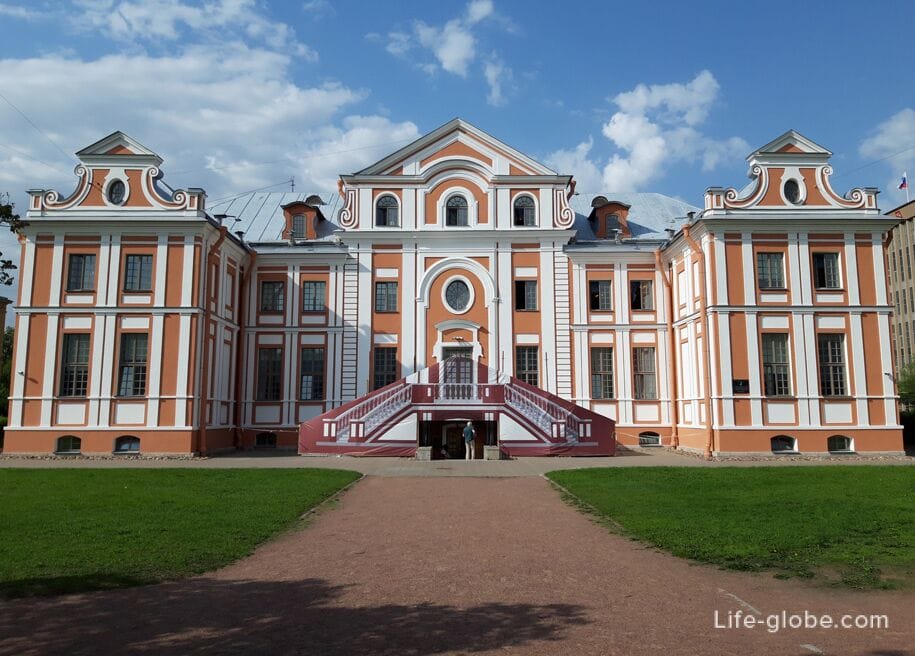
The building was built in 1714-1720, presumably by the architect Andreas Schluter, not far from smolyany dvor, as a house for the admiral-adviser and one of the associates of Peter I - Alexander Kikin.
Kikin was the son of a court groom and together with Peter I in 1697 went to Holland to study ship building. Soon Kikin became the leading mast-maker on the construction of the first ships in Voronezh, then he became the head of the Olonets shipyard; and, finally , an admiralty officer, and after the admiralty-an adviser, that is, the main shipbuilder of Russia. He also carried out important and highly secret assignments of Peter I.
The house built for him was impressive, had, at that time, a fashionable European style-it was distinguished by risalites and facade decorations.
In 1714, the embezzlement of state funds was revealed during state contracts, in which Kikin also participated. After that, Kikin lost the trust of the sovereign, paid a large fine and lost part of his property. Resentment and anger pushed Kikin to join the camp of those dissatisfied with the policy of Peter I.
In 1718, Kikin was executed in Moscow for organizing the escape from Russia of Tsarevich Alexey Petrovich, and his property was taken to the treasury.
In 1719-1727, in the building of the former Kikin house there was a collection of collections of rarities and innovations of Peter I, which was available for public viewing. So the first Russian public museum was opened in the walls of the Kikin mansion - The Kunstkamera, the main purpose of which was the promotion of natural science knowledge.
In the 30s of the 18th century, when the area of the "Smolnaya Village" was assigned to the settlement of the Horse Guards, the Kikin chambers were adapted for the headquarters, and the church of the horse Guards regiment. In this regard, a round bell tower was erected over the building, which is why it was long called the "Round House". In 1828-1829, the architect Alexander Staubert rebuilt the building again, but this time for the establishment of the military department, in connection with which the Kikin house lost the splendor of the Baroque style.
During the Great Patriotic War, the Kikin Chambers were severely damaged. In 1952-1956, they were restored in their intended original form by the architect Irina Benois.
Currently, the building houses the St. Petersburg Music Lyceum.
Now the former Kikin chambers have the style of the so-called "Petrovsky Baroque". The building has a stepped appearance: the central three-story part and two-story side buildings with two projecting risalites. In the external appearance there are: intricate pediments that complete the side wings, blades and volutes on the facade, a two-march porch.
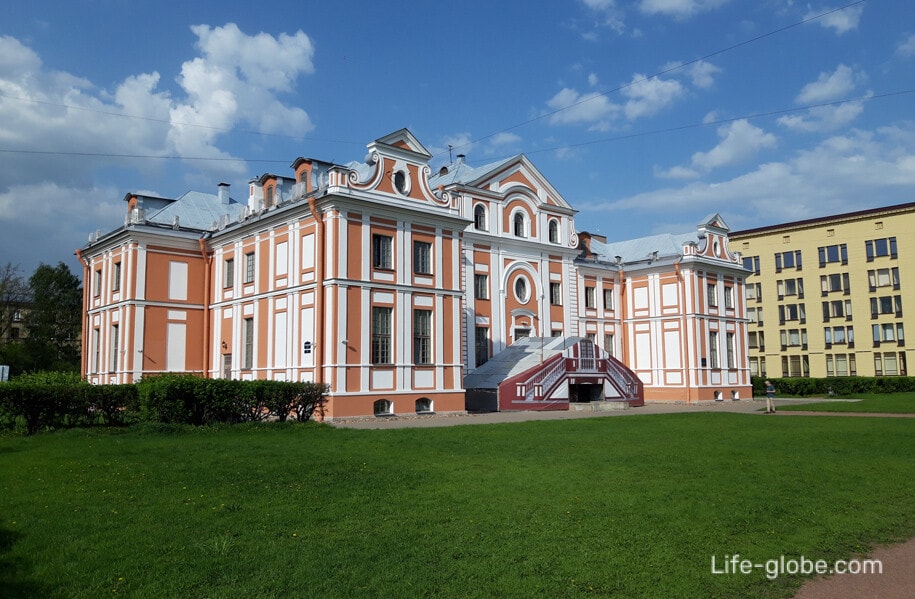
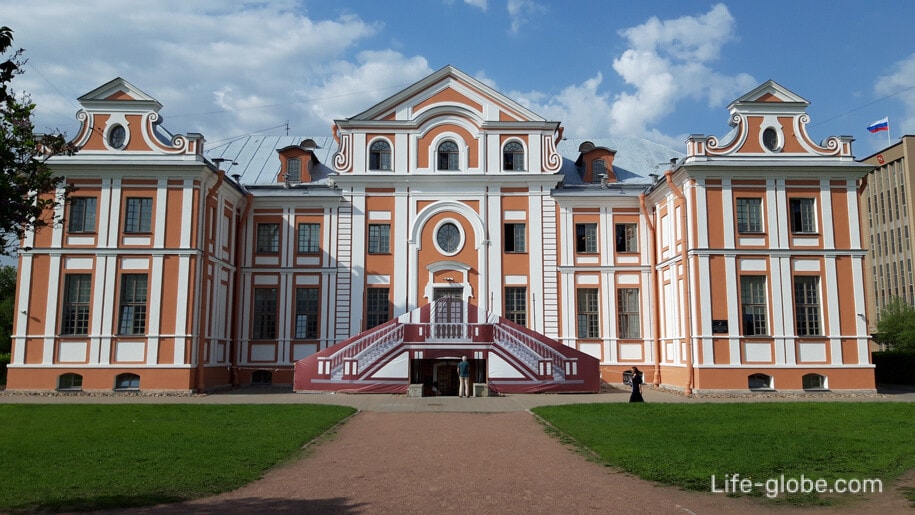

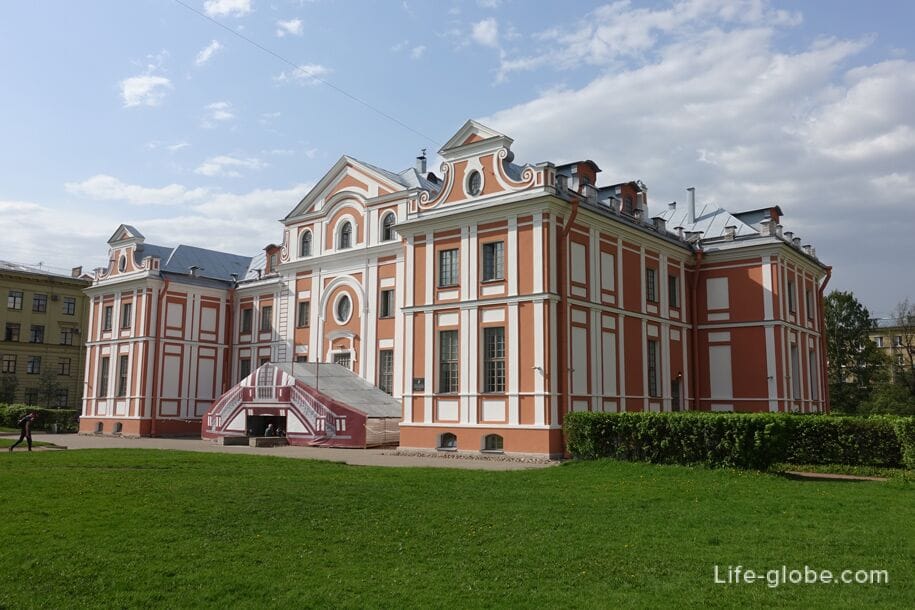
The rear facade of the Kiik Chambers
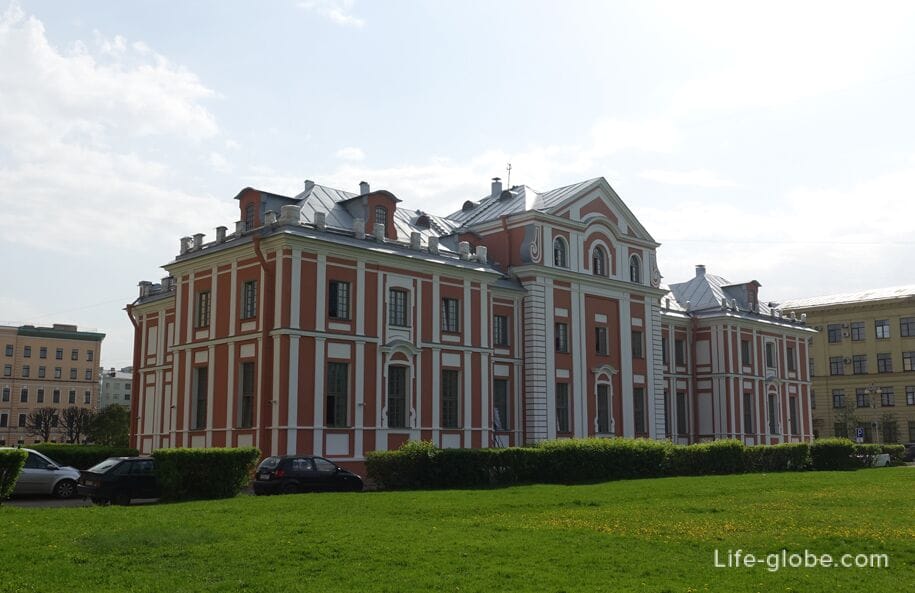
Kikin Chambers are located in the central part of St. Petersburg, near Smolny Cathedral with an observation deck in the belfry, at the address: Stavropol Street, 9.
Coordinates of the Kikin chambers: 59°56'58.0"N 30°23'12.0"E (59.949444, 30.386667).
Nearest metro stations: "Chernyshevskaya", "Lenin Square" and "Novocherkasskaya".
Concerts of students of the St. Petersburg Music Lyceum are held in the walls of the building. Lyceum website: muzlyceum.spb.
All accommodation facilities in St. Petersburg, including in the city center and more remotely from it, can be viewed and booked here